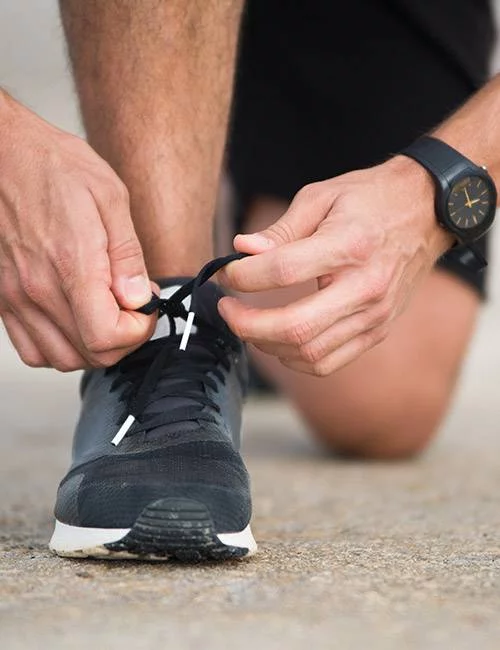SHOES : Things To Consider When Purchasing Running Shoes
Proper fit is essential. Running shoes should fit snugly, yet comfortably in the heel and midfoot
area. Be sure to leave about a thumb’s width space between the toes and the front of the shoe
when standing as the arch flattens easily when running. High price doesn’t necessarily mean high
quality; however, it is reasonable to assume that very inexpensive running shoes may not be as
durable as more expensive footwear.
Anyone who runs regularly should wear running shoes. Shoes should be carefully matched to an
individual’s skeletal anatomy (e.g. leg and foot shape), pronation type (normal, over, and under
pronation), and the surface on which you usually run (e.g. trail shoes). One pair of shoes is
suitable for those running three times per week for approximately 30 minutes, while those
running distances greater than 30 km per week should own two to three pairs.
Trends In Athletic Shoe Development
Improvements are being made in the area of athletic shoe research and development to prevent the
occurrence of sports-specific accidents and injuries. In the past, athletic shoe design was
focused around support and cushioning; however, studies have shown that these components are not
solely entirely effective in preventing injury. Modern shoe construction is focused on producing
a shoe based on the specific needs of individuals based on a variety of factors.
Running Clothes
Fit and comfort, not appearance, are the most essential factors to consider when choosing running
clothes. The basics are a running shirt, shorts, and socks, plus a sports bra for women. For
colder weather, you may want to wear layers that include a running jacket, tights, gloves, and a
hat. Weather-resistant, reflective clothing made from materials like Gore-Tex or Sympatex are
also good to have on windy or rainy days.
Basic cotton t-shirts have been replaced by technical running shirts. Cotton absorbs sweat,
eventually becoming wet, heavy, and unhygienic. Tech shirts are made from special, lightweight
materials that wick sweat from the body, keeping the body cooler and dryer even on hot, humid
days.
Running shorts and tights are made from lightweight, flexible polyester or spandex and are
available in lengths ranging from short to mid-calf and ankle length. Tights are sometimes
preferable to shorts because they help prevent chafing that might result from shorts rubbing
against the inner thighs in hot weather. Ankle length tights often have a zipper near the foot
to make them easier to get on and off. Many running bottoms have a small pocket in the back to
carry keys, money, and other small necessities.
Training plans
What Do I Need To Run?
Striders has a variety of Training plans to suit both beginners, intermediate and advanced
runners. Please contact the Striders team in your area. More details are available at
www.striders.in
Courtesy Striders


